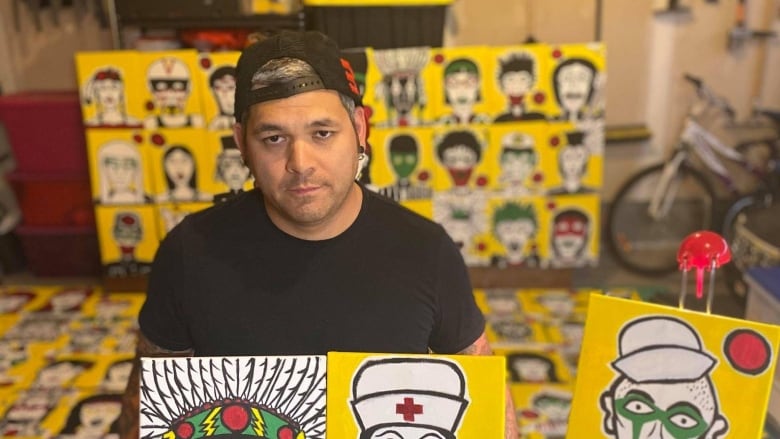Like many, Johnny Bandura was shaken by the discovery of unmarked burial sites near a former residential school in Kamloops, B.C., earlier this year. In a series of 215 portraits, Bandura imagines what each student might have become.

Almost three months since the discovery of hundreds of unmarked burial sites near a former residential school in Kamloops, B.C., one man is doing his part to make sure Canadians don’t forget the atrocity.
Johnny Bandura is Coast Salish and originally from Hay River, N.W.T. He now lives in Edmonton, but he grew up in Kamloops. His grandmother attended the Kamloops Indian Residential School in the 1930s and his father still lives across the street from the site where the discovery was made.
Though it’s still not clear exactly how many graves are on the site, Bandura is now completing a 215-portrait project – one painting to represent each of the children potentially buried there.
The first in Bandura’s series was a painting of a medicine woman — “a portrait of what could have been one of these children,” he said.
He has so far completed just over 200 of the paintings, each with a unique personality and costume. Some are dressed as nurses or hockey players; others in a judge’s gown or adorned in traditional regalia.
“I just wanted to make sure that every aspect of society was taken into [account] with these children,” Bandura said.
“What could these children have achieved in life or what direction could their lives have taken?”

Though Bandura didn’t have an end goal in mind when he started the project, he is currently in discussions with the Kamloops Art Gallery to display the portraits once completed.
“It’s pretty emotional to see them all together,” he said.
He is also considering publishing a picture book to allow for the portraits to be distributed to anyone looking to see the images up close, “because they are a little more impactful to see in person than they are just on your phone or computer,” Bandura said.
As he completes the final portraits, Bandura said he’s been thinking about his own children and how, as status Indians, they could have been taken away, had they been living only a few decades in the past.
Beyond an apology, Bandura said more should be done to honour the victims.
“That’s why I’m going to continue to paint and create art,” he said. “[To honour] the impact that those lives could have made — and are making in the world today. Just a huge piece of humanity, lost.”
Support is available for anyone affected by their experience at residential schools, and those who are triggered by the latest reports.
A national Indian Residential School Crisis Line has been set up to provide support for former students and those affected. People can access emotional and crisis referral services by calling the 24-hour national crisis line: 1-866-925-4419.

